Beautiful birch
Description essay on the topic: “How beautiful the autumn birch tree is”
Option 1
With the arrival of autumn, the birch tree becomes even more beautiful and elegant. Just as slender, with a white slender trunk, now she, like a real fashionista, dresses in new golden-yellow clothes. Its thin and flexible branches sway in gusts of cool wind, rustling slightly dry carved leaves. On their smooth surface, the rays of the dim autumn sun sparkle with soft light. When birch leaves are just beginning to turn yellow, their core and veins retain their bright green, and then, gradually, autumn turns them entirely golden. But not all birch leaves acquire the same color - among them there are brown, brown, reddish, and even emerald green leaves that do not give up in autumn.
The grass at the roots of the tree gradually dries out and becomes covered with fallen leaves. At some point, the caps of boletus and porcini mushrooms poke through it, and the birch no longer looks sad, since it now has friends. Against the background of a clear blue sky, the graceful silhouette of a birch tree resembles the figure of a slender girl with a shock of golden hair.
And when beautiful birch trees gather in company, they create a truly magical corner of nature. A birch grove in autumn is a surprisingly bright and sunny place, where even the air seems more transparent than in other places. You stand among the white birch trunks, and around you there is a multicolored autumn variety of delicate leaves, you raise your head, and there is the deep blue of the sky. And this such ordinary and such incredible beauty is simply breathtaking!
Option 2 Essay “Autumn Birch”
Birch is a tree of endless inspiration for poets and artists; its beauty leaves no one indifferent. What is so special about it that sets it apart from the variety of other beautiful trees and makes it sing in songs and captured in paintings?
Birch is not as powerful and mighty as oak or beech, not evergreen like pine or spruce, its leaves are not like the “stars” of maples and chestnuts, and does not stretch into the sky like poplars. However, birch has a special fragile, delicate and graceful beauty that makes people’s hearts tremble. Its smoothly curved trunk, white bark with black spots, thin flexible branches, lacy leaves... Birch becomes especially beautiful with the onset of autumn.
Autumn is an artist at heart, and her favorite palette is sunny. Birch leaves generously get warm yellow color and golden shades from it. golden branches autumn birch as if the hair falls to the ground. And even when the foliage falls off, the graceful figure and arched branches will preserve that delicate beauty of the birch tree that sinks into people’s souls. Birds will rest on high branches. Slender and defenseless, she will sleep until spring under a heavy cover of snow.
And while autumn is still in full swing, golden-haired birches are whispering about something in the forests and parks, catching the wind and sunbeams with their flexible branches, and dropping dry carved leaves onto the cooling ground. People admired by their beauty will try to preserve it in paintings and photographs in order to warm themselves with its golden warmth during the approaching winter frosts.
Natural monument " Beautiful birch» is located in the Abansky district, 20 km from the village of Aban, in the area of the Morozovka tract. The birch tree is located in an open area, the trunk diameter is about 30 cm, the height is about 18 m, the age of the tree is more than 70 years.
Photo: abanchudo.blogspot.ru
This unusual natural monument includes one birch tree and a surrounding area with a radius of 7 m. The tree received the status of a regional natural monument due to the pyramidal shape of its crown. At the base it is similar to the crowns of many other birches, but the higher it is, the more intricately intertwined its branches are. The branches seem to be arranged in tiers, like the steps of a pyramid. The birch tree was given the status of a natural monument on January 16, 1991.
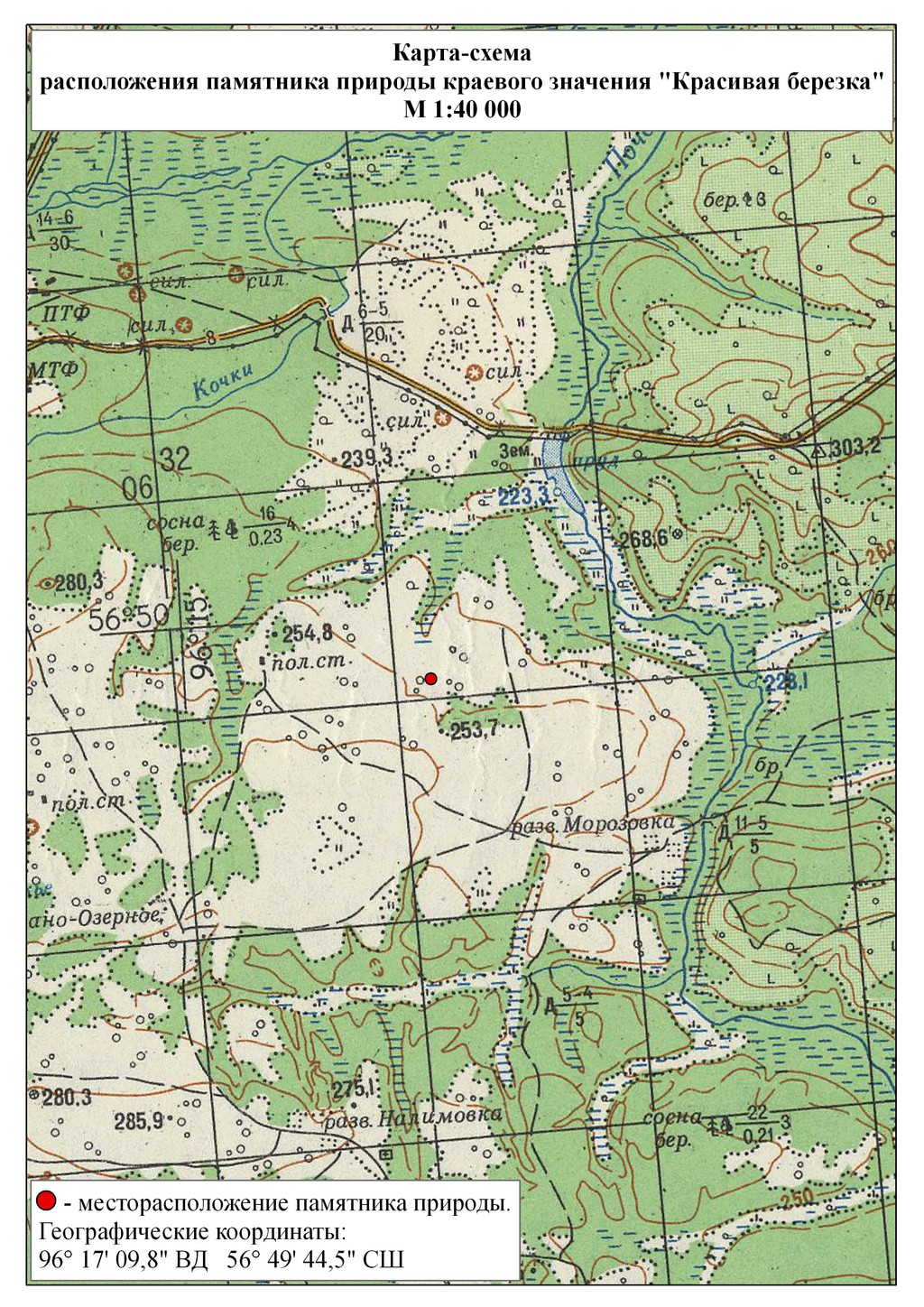
Photo mpr.krskstate.ru
On the territory of the natural monument, it is prohibited to plow the land, use pesticides, light fires and burn dead wood, and carry out agricultural burning.
The legend of the “Beautiful Birch Tree”.
In ancient times, hardworking, beautiful people settled among the remote taiga and swamps, on the banks of the Pochet River. They named their village Morozovka - without fear of Siberian frosts, snows, or blizzards.
In the same places from which they came, slender cypress trees grew, chestnut trees bloomed, and roses fragrant.
These people then generously watered the Siberian soil, uprooted hundred-year-old trees, and plowed up more and more new areas. The grateful land began to produce good harvests. The Morozovites lived happily and freely.
And one peasant had a daughter of indescribable beauty: for this beauty and in memory of his ancient village, he named his daughter Rose.
And then different times came - terrible ones: storms and fires darkened the sky, an angry abyss swallowed up the fertile fields. Overwork killed his father, and then Rosa’s mother died. Residents began to leave the village, looking for a better life. Only Rose did not want to go anywhere from the graves of her father and mother, and lived alone in the wilderness, in the kingdom of Tsar Berendey.
She married his son: playful and mischievous, cheerful musician, forester Lel. Tsar Berendey turned Rose into a beautiful birch tree, with which Lel sang his songs and played with strands of her long hair, braided and unbraided her braids. The beautiful birch tree has become similar to the southern cypress, and also to the pyramidal poplar, also its relative in the southern homeland of its ancestors.
One day, trouble loomed over the birch tree: people flew in on large rotary-winged birds, having heard about the extraordinary beauty, they wanted to tear it out of their native land and take it to their kingdom. But that was not the case: neither Tsar Berendey nor the faithful brave Lel allowed such madness: they firmly held the roots of Berezka by the native land, fed her lungs with the air of endless expanses. The aliens flew away with nothing.
Lel and Berezka gave birth to many, many branch children, who stretch their white hands upward, looking at their mother’s curly head, with strands of long hair. The Birch stands firmly on its feet among the wide fields, living amicably with its neighbors - trees and shrubs, letting migratory birds under the cover of its branches. No storms, blizzards, lightning or thunder strikes can break this friendly family.
Gray, dry curls have already appeared in the strands of the beautiful Berezka, but still nowhere in our region is there more beautiful than her. And here she stands with all the children, raising her hands to the sky, still praying - praying so that cruel troubles will not strike Mother Earth, so that evil will not overshadow human souls.
It’s not so easy to find Berezonka in this taiga wilderness, but whoever finds her, comes and comes to her, will gain strength and wisdom to sow eternal good!
White birch is truly one of the most beautiful trees, it truly personifies Russia, a beautiful white-trunked tree. Most birch species reach a height of 30 meters. White birch is a beautiful snow-white tree, less often a shrub, with beautiful hanging branches and a white trunk. The entire family has about 150 species of trees and 6 genera. In Russia, this tree is common in temperate regions, as well as in mountainous areas.
White birch - description of the tree, photos and videos
This tree itself is beautiful, with widely spreading branches and a large crown, it attracts attention at all times of the year. Also, this beautiful tree has been and will always be the subject of poems, songs and epics.
This tree has long been considered purely Russian, and often personifies Russia. If you once see a beautiful forest, mainly of birches, you will remember this picture for a lifetime.
This beautiful tree begins to bloom in May, it is a sight of indescribable beauty, although the flowers of the birch are modest - catkins. This tree grows everywhere, primarily due to its simple reproduction; the fruits are simply carried by the wind.
Birch is often called a pioneer because it grows faster than other trees and can grow where other trees cannot grow.
This beautiful tree, in about 25 years, grows as tall as a five-story building. This tree is very moisture-loving. This tree is also widely used; brooms and brooms are made from branches, thin paper is made from birch bark, furniture is made from wood.
They also make native Russian baskets and bast shoes from birch. And medicines are made from kidneys. In earlier times, our ancestors could not imagine life without a birch splinter, since it was the only source of light at that time.
In total, this family has about 140-150 species; it grows almost everywhere, from the subtropics to the tundra. There are about 70 species in Russia, but, unfortunately, due to illegal logging, many species are disappearing forever. In Russia, 4 species of birch are listed in the Red Book, these are Far Eastern birch and Megrelian birch. Due to their rarity, these birches grow only in the Caucasus. The most common species growing in Russia are: silver birch, or silver birch, and downy birch.
White birch grows for about 120 years, with the exception of the so-called iron birch, which grows for about 400 years, which is quite a lot for a tree. This is also a beautiful tree, it has another amazing property if you cut it in early spring, then a sweet, clear liquid will begin to flow from it. This is birch sap, the famous kvass is made from it.
White birch is a truly Russian tree, which is almost always personified with Russia; you need to protect and care for such trees, and indeed for the whole country.
Watch the video - White birch
Thanks to its dark stripes and lines, white birch can easily withstand both heat and cold. When it gets too hot, they open and let air inside the plant; in cold weather, on the contrary, they close tightly and prevent the plant from freezing. The vitality of the tree still surprises scientists: after its branches were removed several times from the freezer, the temperature inside which was -273°C, they thawed and came to life.
Birch belongs to the genus of deciduous trees and shrubs of the birch family, which includes about 120 species. Sixty-five species grow in Russia. The tree is widespread throughout Northern Hemisphere, and therefore it can be seen not only in Eurasia, but also in the territory North America, V warm countries with sandy soil and even beyond the Arctic Circle.
Such a wide distribution area is explained by the fact that white birch is undemanding, perfectly tolerates both heat and permafrost, and takes root on any soil. These plants, however, are light-loving, but among them there are many shade-tolerant trees.
It is no coincidence that the people called the tree “white birch”: the color that distinguishes the birch trunk so brightly among deciduous plants is due to the organic dye betulin, which contains a large number of silver ions that have an antimicrobial effect (for this reason there are few microbes near plants, and medicines and products it has a medicinal effect). Accordingly, in the soil of a birch grove the amount of this chemical element is greater than in the lands of a mixed forest.
True, not every species of birch bark is white: in some plants it can be yellowish, pinkish, brown, as well as grey, brown and even black.
Description
According to their descriptions, most species have a height of 30 to 45 meters, although very small specimens are often found: the height of the smallest tree in the world is from one to one and a half meters, and some shrubs even spread along the ground. Once a tree sprouts, it grows extremely slowly in the first years, but the older it gets, the faster its growth rate.
Birch roots are powerful and, depending on the type of soil, are either superficial or go at an angle deep into the ground. Birch has very high humidity in the spring: increased movement of sap begins inside the plant, when nutrients from the soil rush upward through the roots.
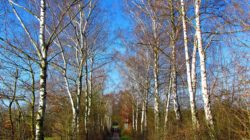
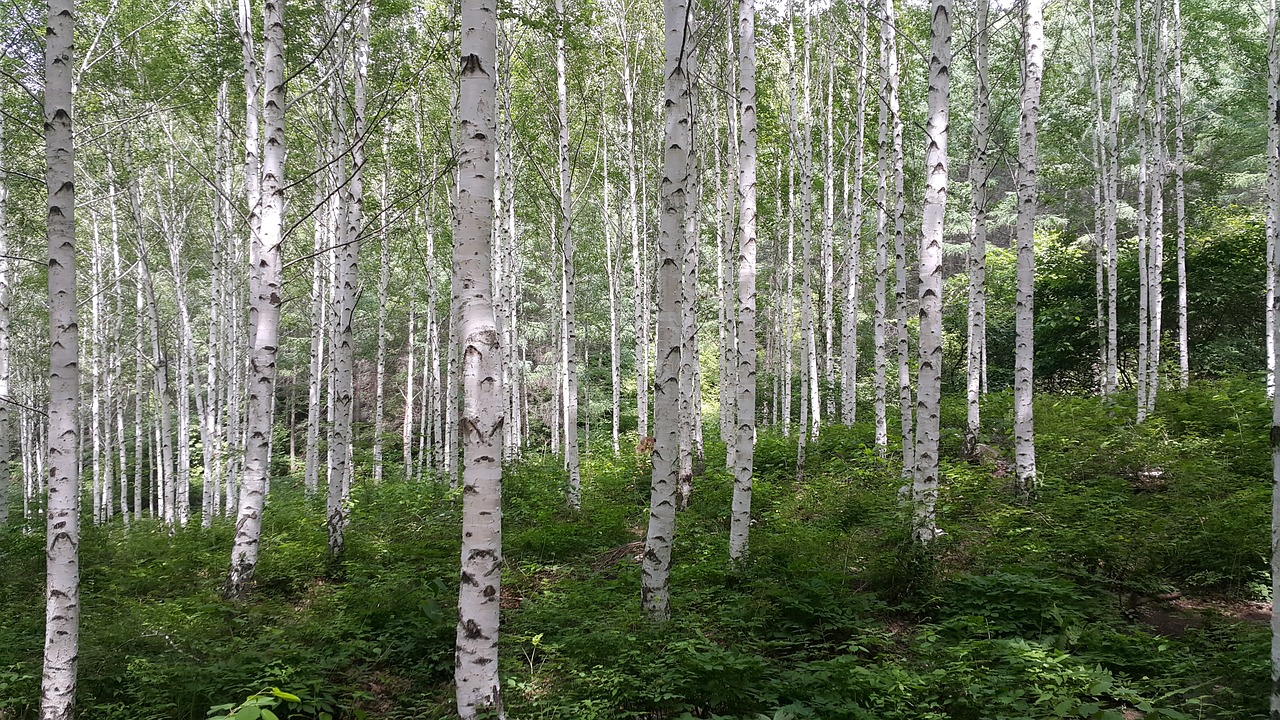


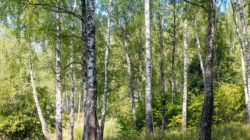
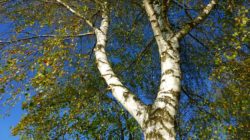
Many people collect plant sap at this time: they make cuts through which the liquid rushes out and can flow out for several weeks (a tall tree can produce about a bucket of sap in a day). As a result of this, the white birch is greatly depleted, and viruses enter it through wounds, which can cause the death of the plant. Therefore, after collecting the juice, the bark must be covered with clay or resin.
Birch leaves are alternate (arranged in a spiral, with one leaf coming from each node of the stem), whole, jagged along the edge, smooth, have a length of about seven and a width of four centimeters. In spring, young leaves are sticky, then this ability is gradually lost. Birch sheds its leaves in the fall, and before falling, the birch leaves turn yellow.
Wood
White birch has strong, dense, light-colored wood with a slight pink or yellowish tint. The pattern on it is weakly expressed, wavy, the growth rings are almost not visible, and reddish, chaotically scattered spots are characteristic. One of the most beautiful woods is the Karelian birch - a low plant that has a highly deformed trunk in the form of spherical swellings and tubercles.
Previously, the Karelian birch was considered a separate species, but now biologists have come to the conclusion that it is a warty (silver) birch, the trunk of which is deformed under certain conditions. That’s why the life of the tree is short: the Karelian birch lives for about forty years (some species live up to one hundred and eighty), and therefore does not have time to grow, and its height is about twenty-five meters.
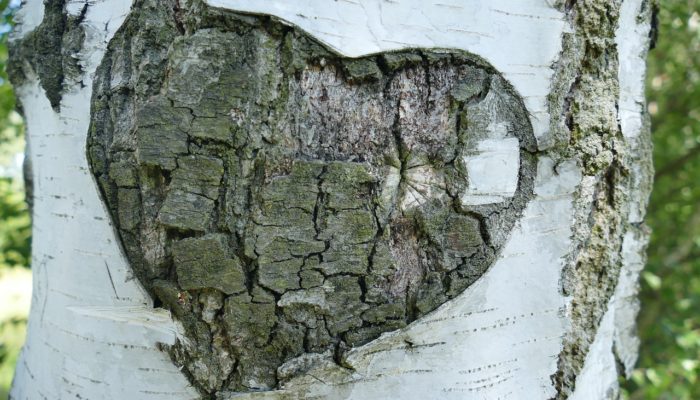
The Karelian birch became famous for its marble-like texture and color: brown spots on a golden background (due to its properties, expensive products have long been made from it: furniture, decorative items, souvenirs). Scientists have not yet come to a common opinion about the reasons for the appearance of such an amazing pattern. Among the main assumptions why Karelian birch has patterned wood, the following versions are put forward:
- violation of mineral nutrition;
- viral infection;
- hereditary disease.
Despite the fact that when crossing two plants of this species, the Karelian birch passes on its amazing structure by inheritance, the decorative characteristics are not always completely transferred, and it is possible to determine whether the wood will have a pattern no earlier than after five years.
Karelian birch is also of particular value because it is very rare, and therefore its cost exceeds 1.5 thousand dollars, and is sold not by cubic meters, but by weight, in kilograms.
Bloom
All types of birch trees are monoecious plants (they have flowers of the same sex, which have both pistils and stamens), flowering occurs in the spring, birch pollen is carried by the wind.
First, two or three male flowers up to four centimeters long appear in complex inflorescences (birch catkins) in the summer. They consist of huge amount thyroid scales fused with the main stem of stalk-shaped thyroid scales. These plates widen closer to the top, at the bottom they have two small scales, each of which has three flowers on the inside, where the stamens are located.
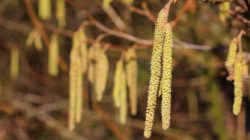
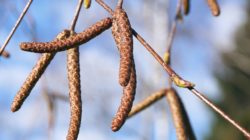
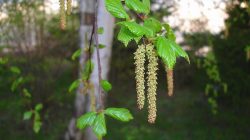
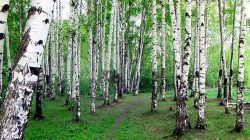

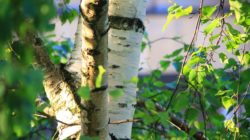

The outside of the male catkin is covered with a resinous substance, which prevents moisture from penetrating inside and allows it to overwinter peacefully. The birch tree wakes up in the spring, the male catkin lengthens, the scales of the flower open and stamens appear, from which the birch begins to dust in all directions. After this, men's earrings, which were previously absolutely straight, bend and hang.
Female birch catkins are not so noticeable: they are much smaller, thinner, more inconspicuous, and look like small greenish mouse tails. They develop from last year's lateral buds and are always located on the side of the branch. They bloom together with male earrings and contain a large number of flowers, each containing two ovules.
Pollination of birch occurs with the help of the wind, when birch pollen falls on a flower, one ovule dries out, and the second develops: the female catkin begins to lengthen and, due to the increase in the size of the scales, begins to resemble an oblong cone, which crumbles after the fruits in them ripen.
Seeds, having fallen from the tree (since they are very light, the wind can carry them a hundred meters from the mother tree), are able to immediately begin to germinate, and if conditions are unfavorable, they go into a dormant state and, on occasion, can hatch over the course of several years.
Medicinal characteristics of the tree
White birch has long been famous for its healing properties, and people have long learned to use various parts of the plant (wood, bark, sap, buds, leaves) for their own benefit. Moreover, they are used both in medicine and in other fields of activity.
Medicinal properties birch is difficult to overestimate: the bark and branches of birch contain betulin, which colors them white and contains a high percentage of silver. Betulin, entering the blood, improves liver function and reduces joint pain.
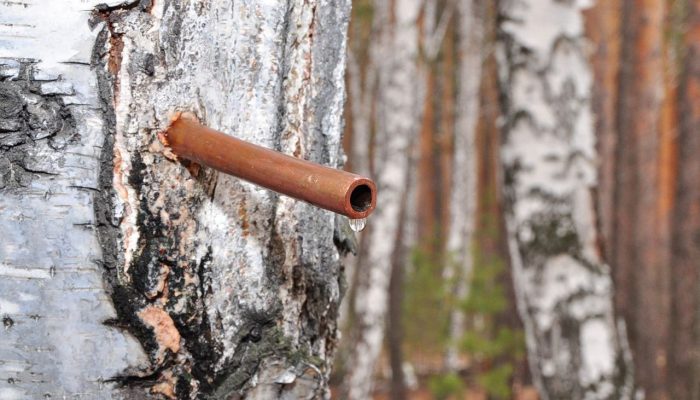
Birch sap and decoctions strengthen the immune system, and the plant itself has a beneficial effect on health. Scientists have found that people living near a birch grove are much less likely to suffer from colds, since the volatile phytoncides released by the tree suppress the growth and development of bacteria. Therefore, products using a birch branch are especially valuable. For example, manufactured brooms under the influence of hot air release phytoncides, which sterilize the air and fill it with antiseptics.
In its buds, white birch contains about five percent essential oil, ascorbic acid, higher fatty acids, and various resinous substances. Birch leaves have medicinal properties, which also contain tannins, as well as flamanoids, which improve the elasticity of blood vessels and prevent sclerotic diseases.
Tar is obtained from the bark of the plant, which has long been used in medicine as an antiseptic. From the top layer of tree bark, birch bark, which is highly durable, an excellent material is obtained for various crafts: baskets, bast shoes, various kitchen utensils. The peoples of the Far East made boats from it, and in Rus' it served as paper (birch bark writing): scribes wrote on it with scribble and sharp bone sticks.
